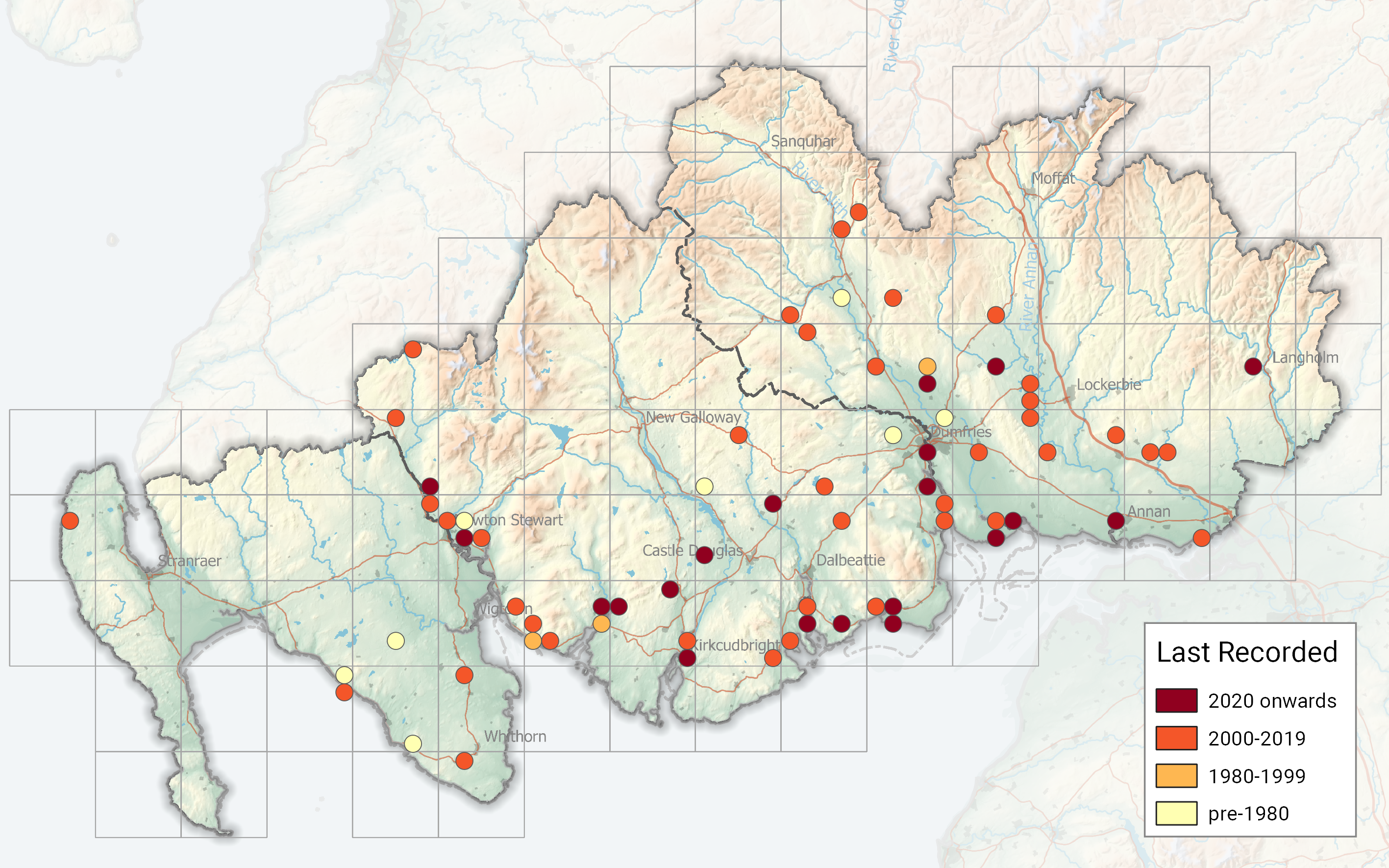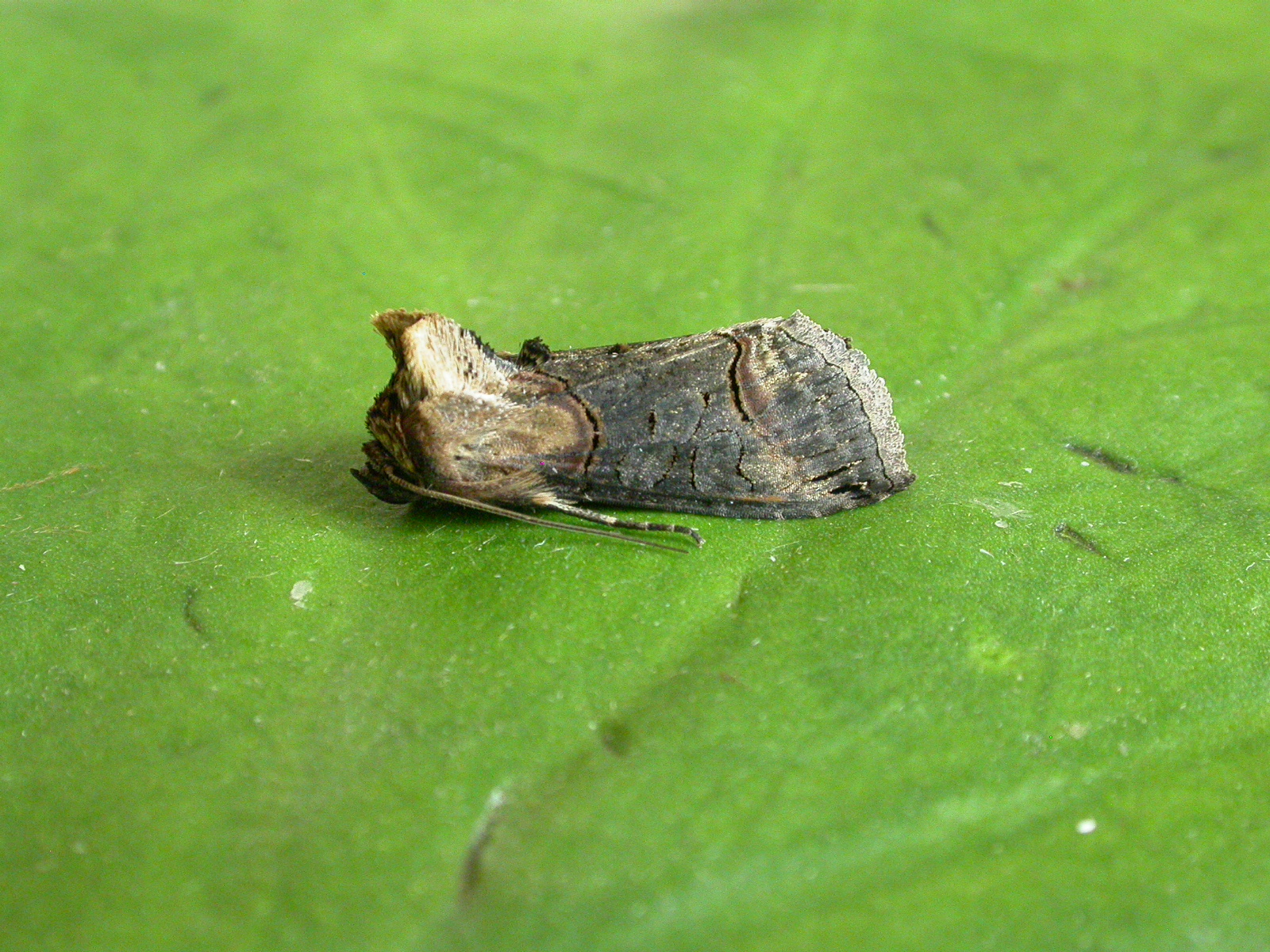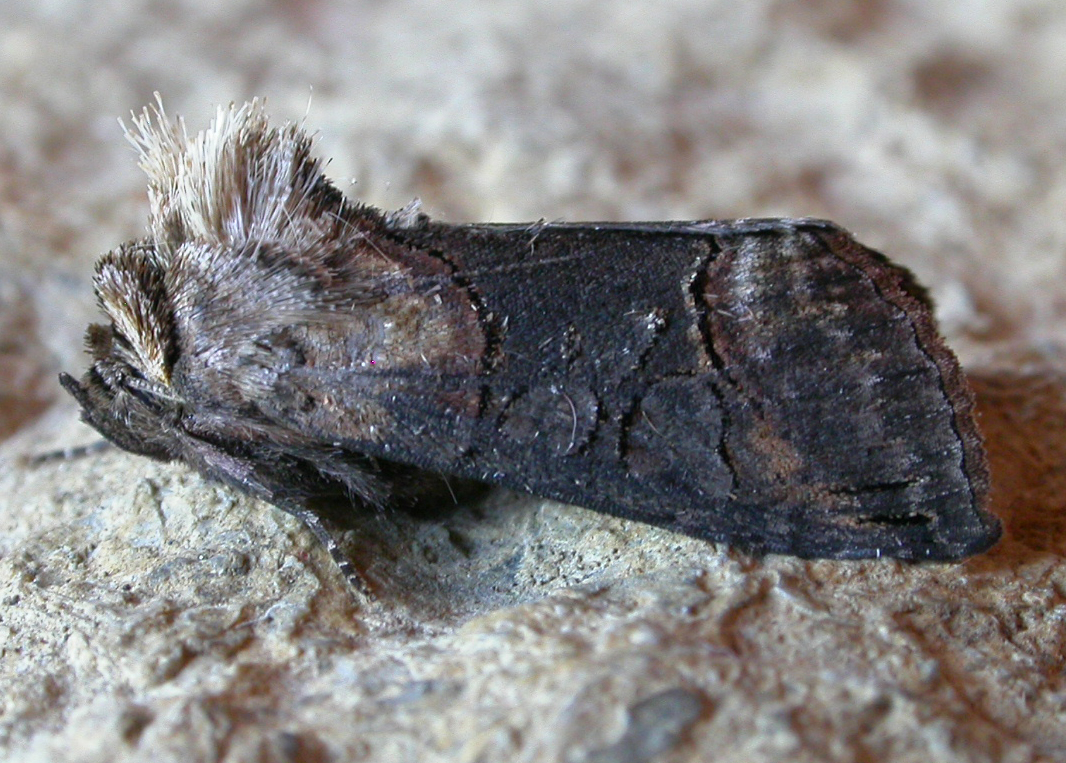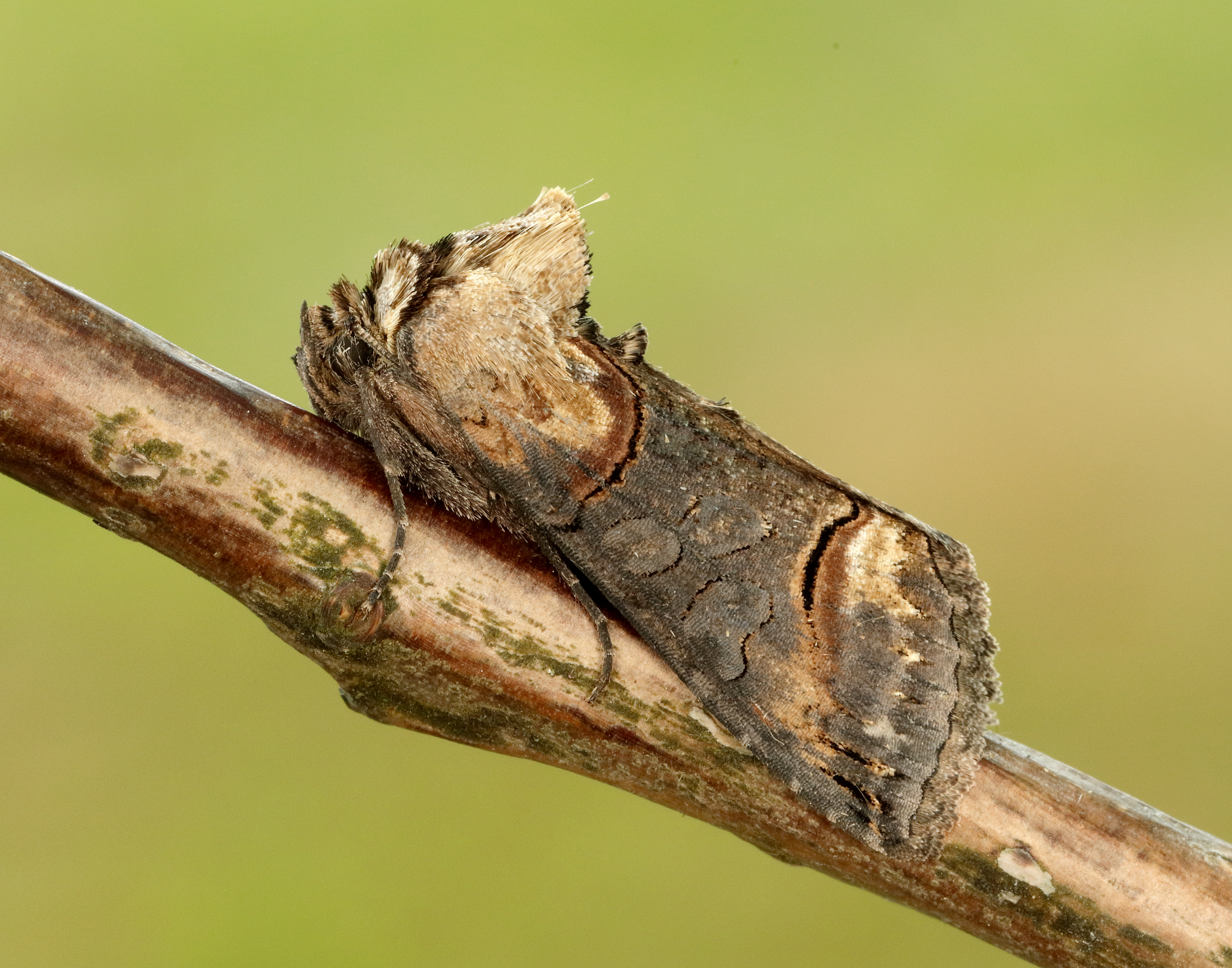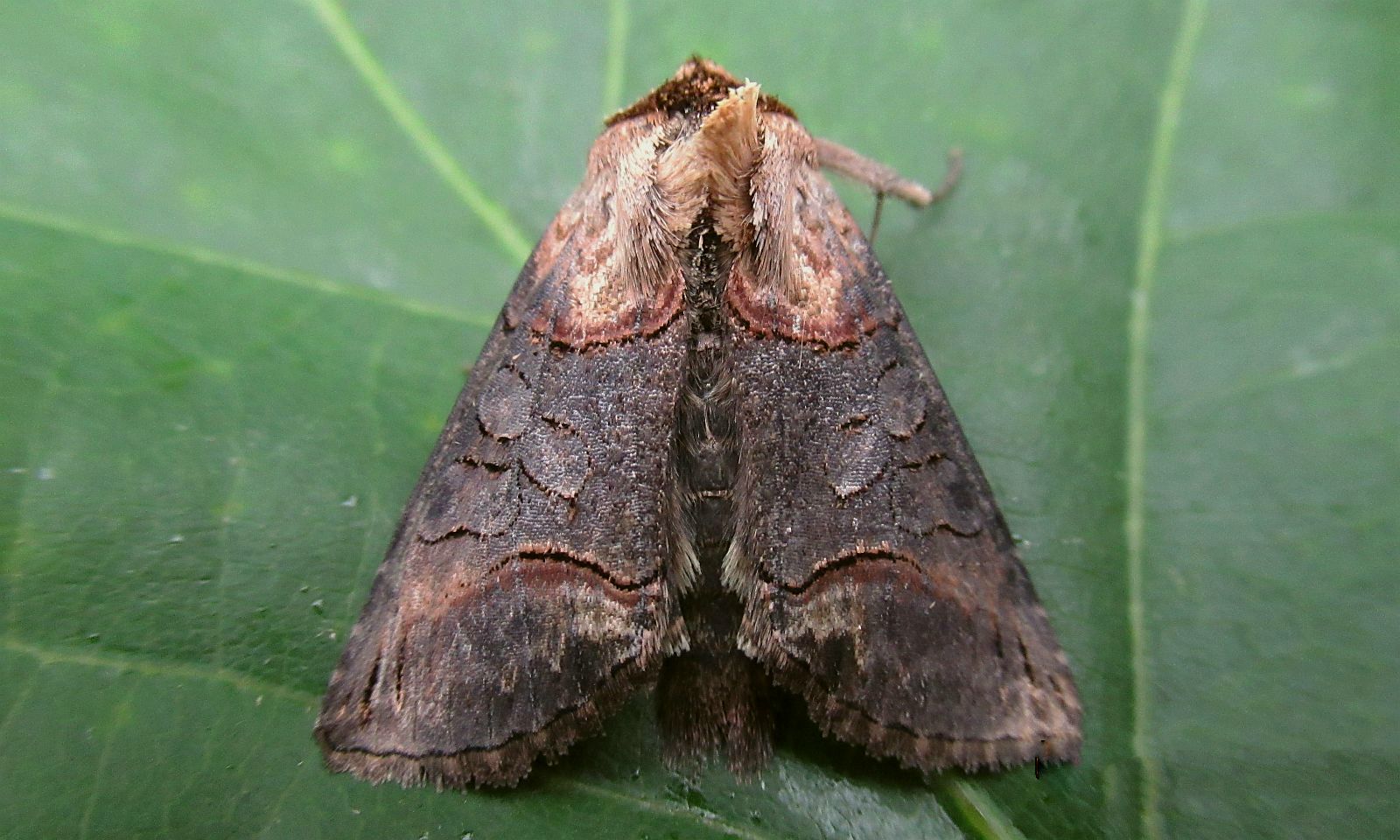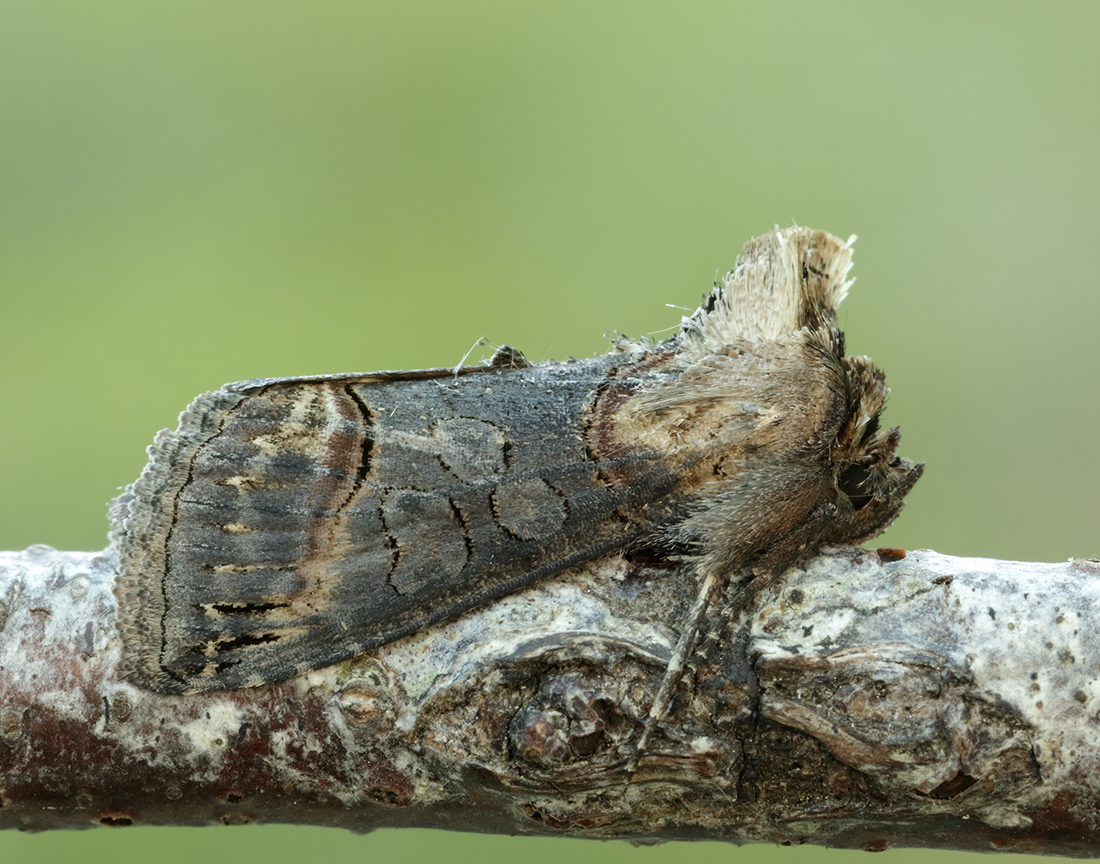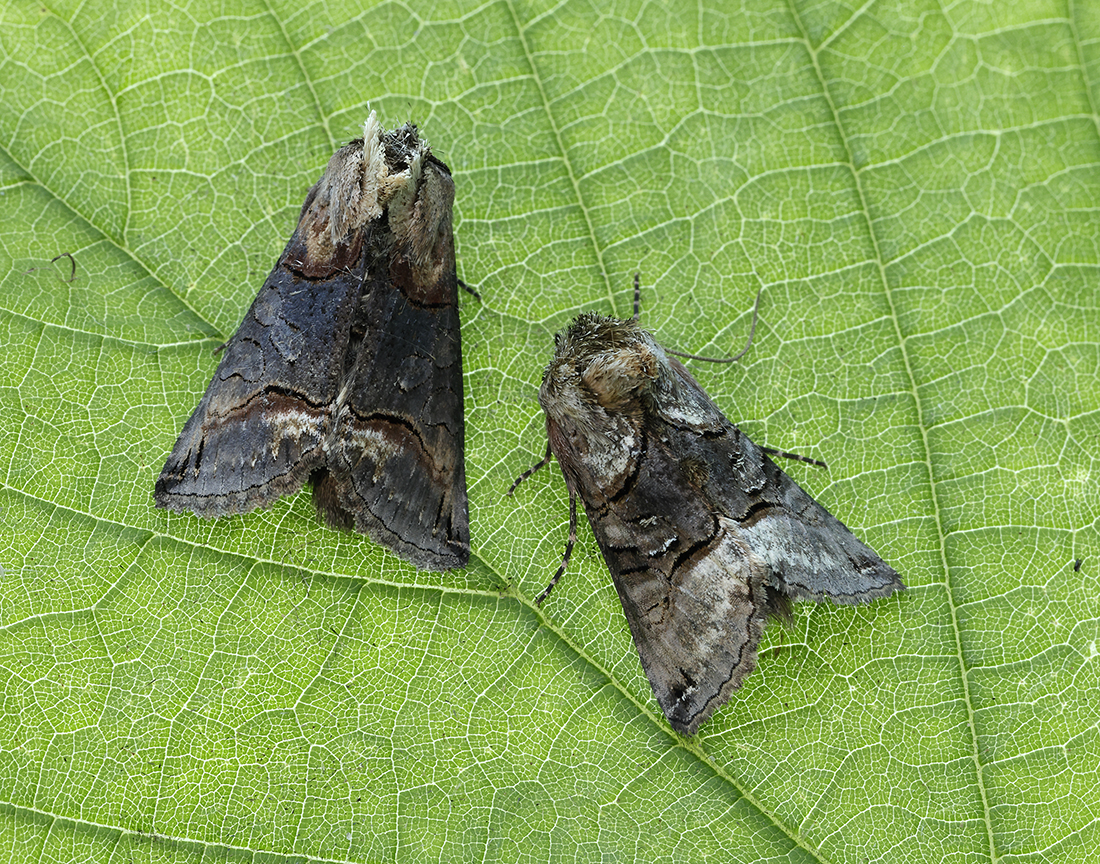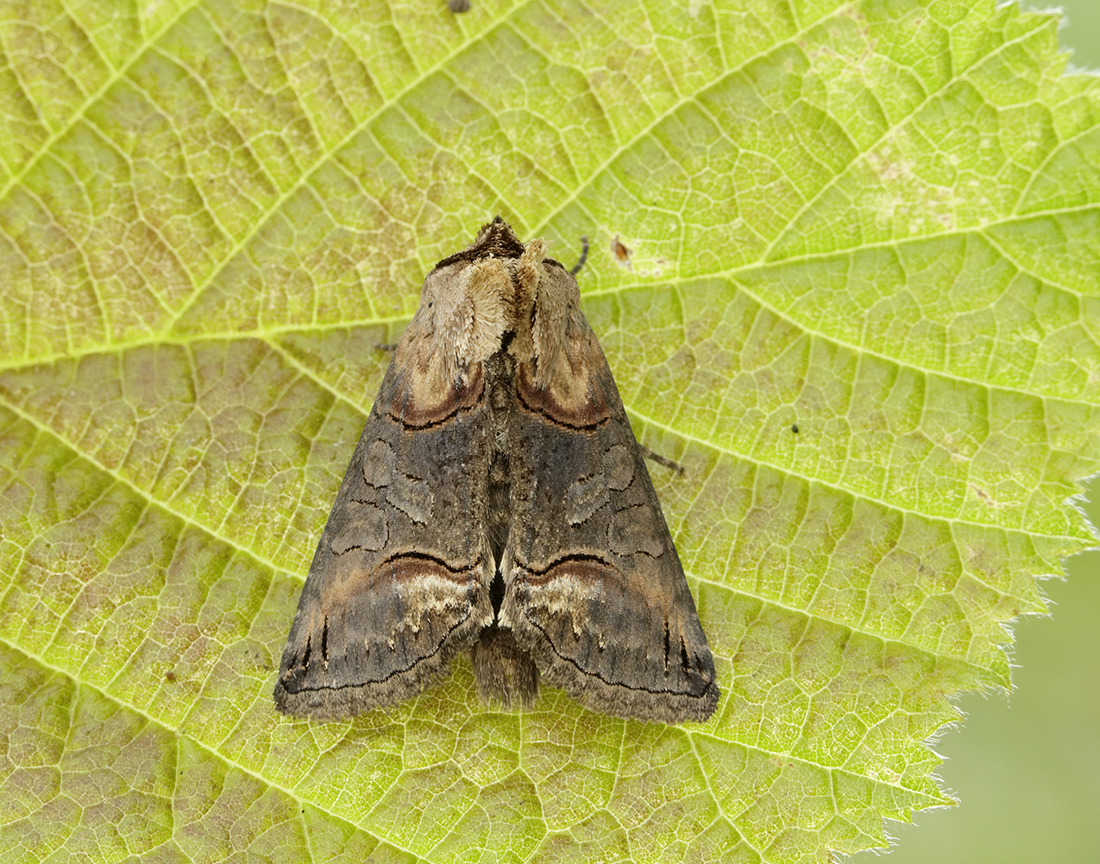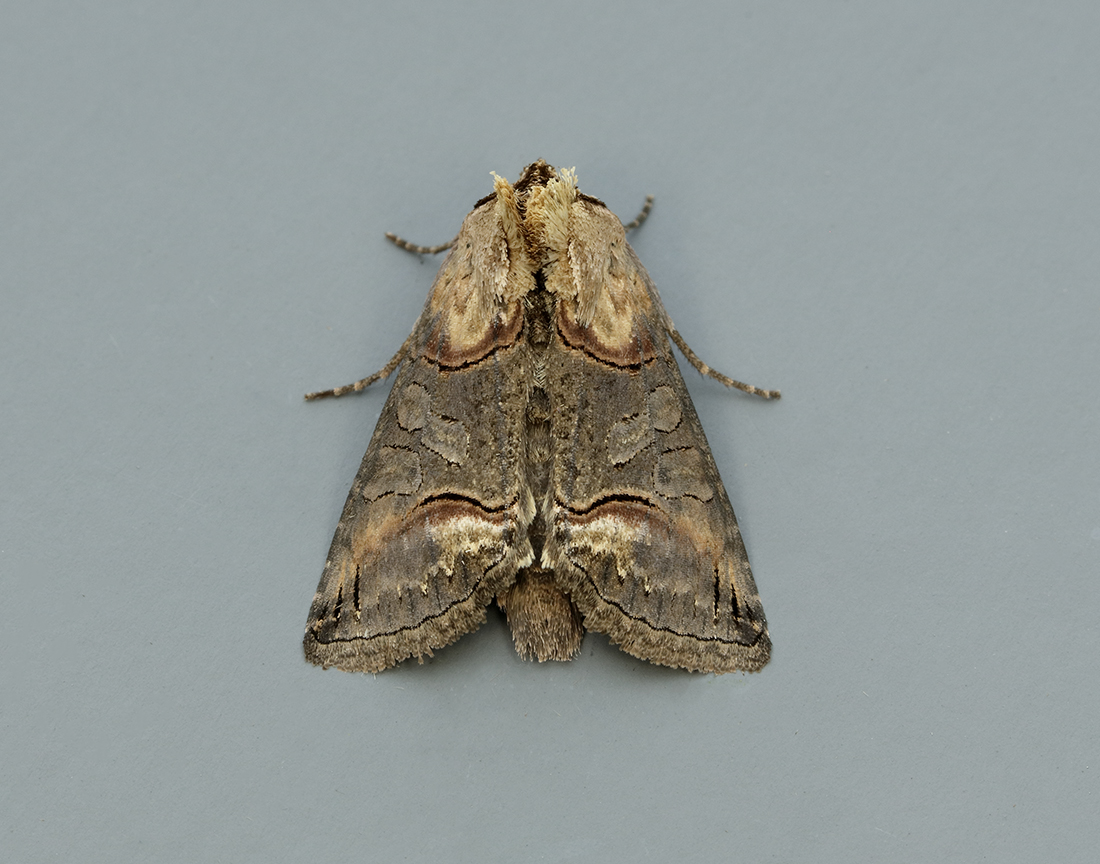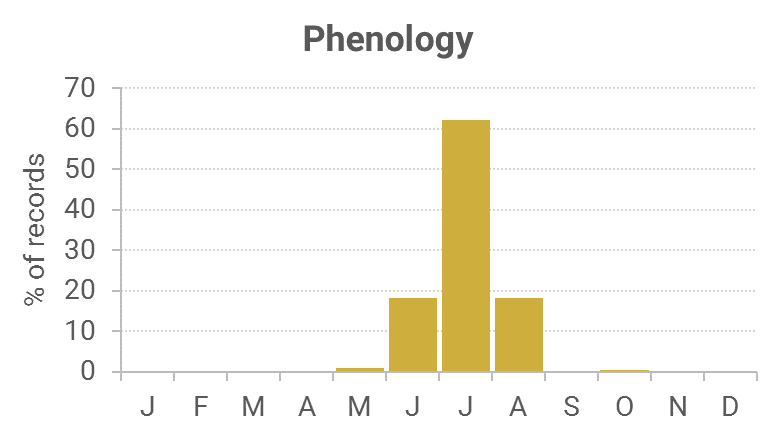Identification
Base of forewing is dull straw while the rest of the wing is brownish-black. Cross-lines are edged with reddish brown while the kidney-mark and oval are faintly outlined. Care required to distinguish from Spectacle.
Recording Method.
Attracted to light.
Life cycle
One generation. Overwinters as a pupa, in a cocoon in a folded leaf of the foodplant. Larvae are present July to September, where they are active by night and day on the foodplant.
Larval foodplants
Larvae feed mostly on Common Nettle.
Habitat
A wide variety of habitats including hedgerows, gardens and woodland margins.
History
Lennon (1863) stated that it was uncommon, but that it had occurred at Terregles (VC72). K. J. Morton of Edinburgh (1900) whilst on a visit in July 1899 to Wigtownshire had found this species in the Monreith area. Gordon (1913) found it to be scarce, but it came to flowers at dusk in his garden at Corsemalzie, with several in the garden at Alticry, Wigtownshire, on 4th July 1905.
Sir Arthur Duncan (1909-84) during his lifetime had found it at Closeburn and Castlehill, Dumfries (VC72).
Just two Rothamsted station records, one from Caerlaverock in 1976, the other from Waterside Mains at Keir in 1977, both VC72.
During 1993-2001 Kirkton was practically the only site recording it, with the odd record from Kirkcudbrightshire. Just two records from Wigtownshire during 1992-2010, Forest Moor in 2006 and Chippermore Point in 2010. The rest of the records are mainly from home trapping.

